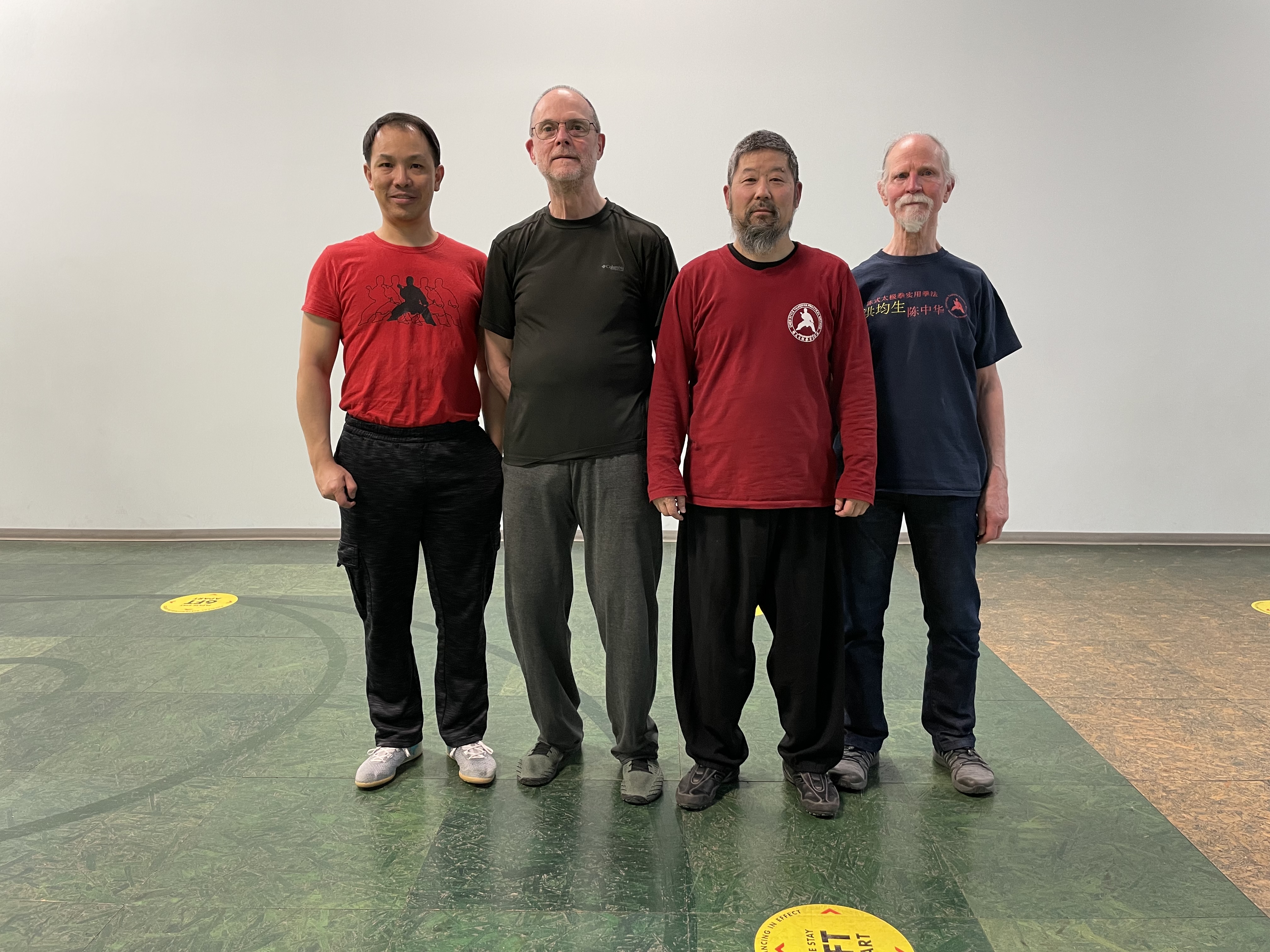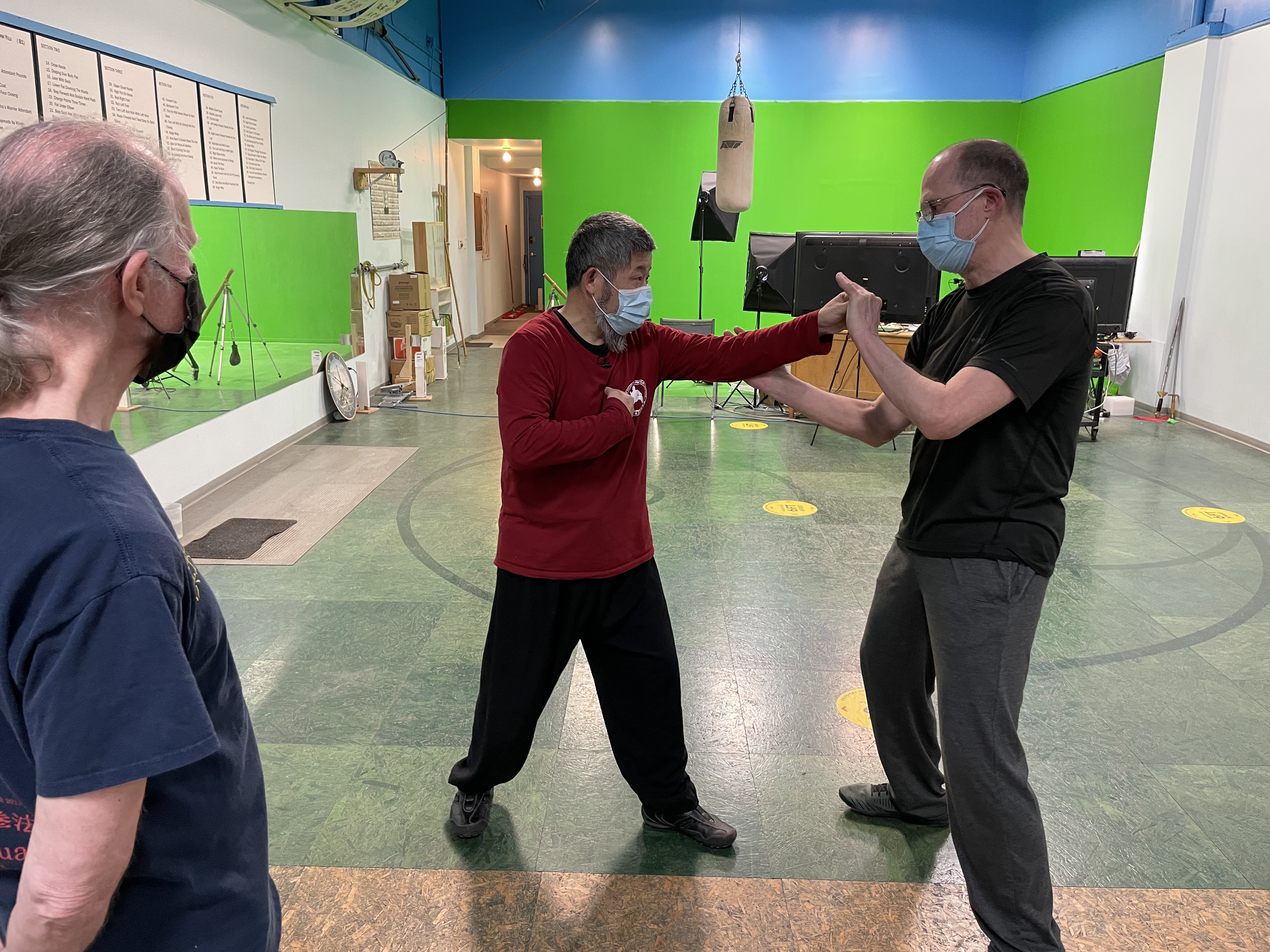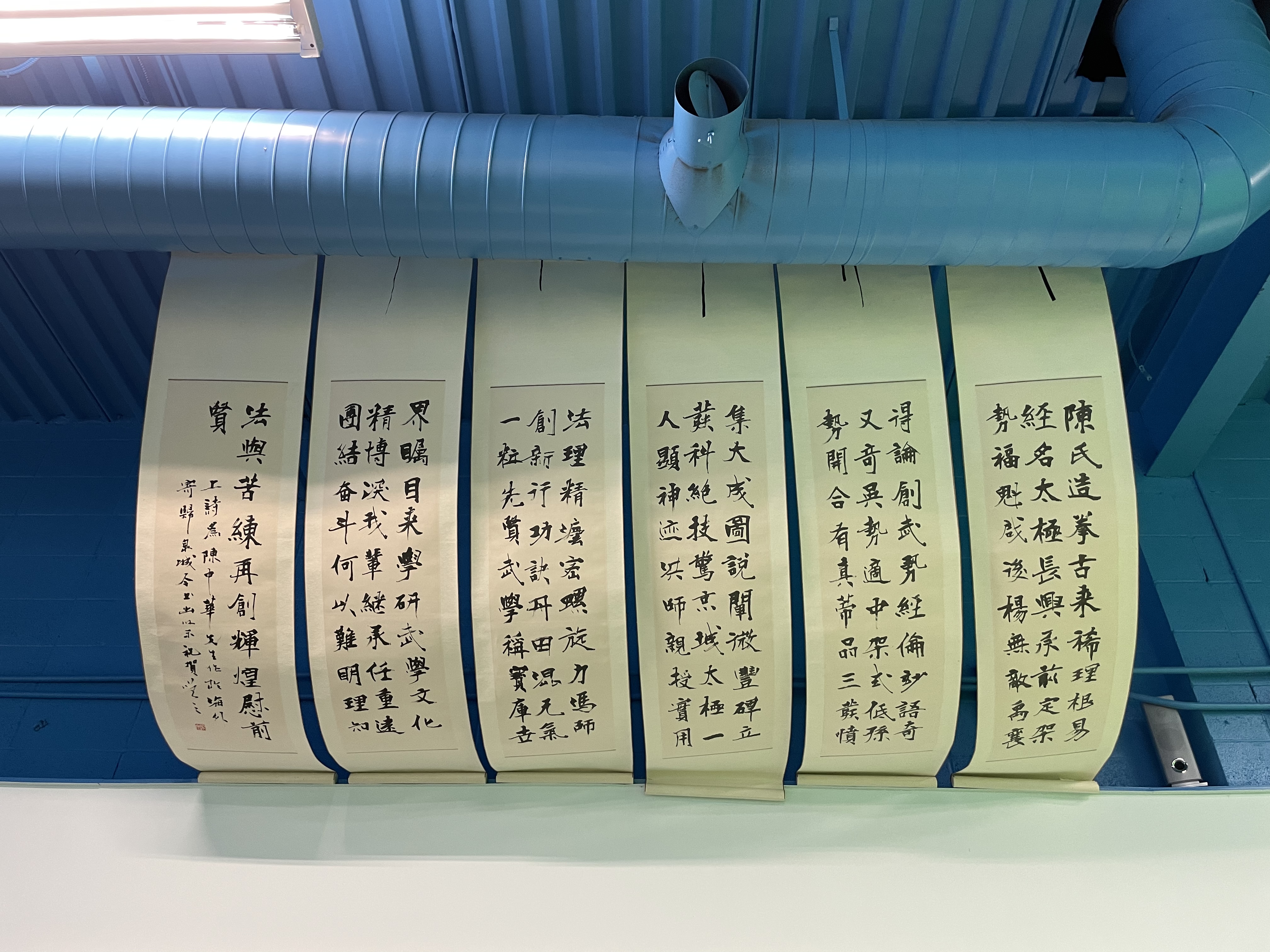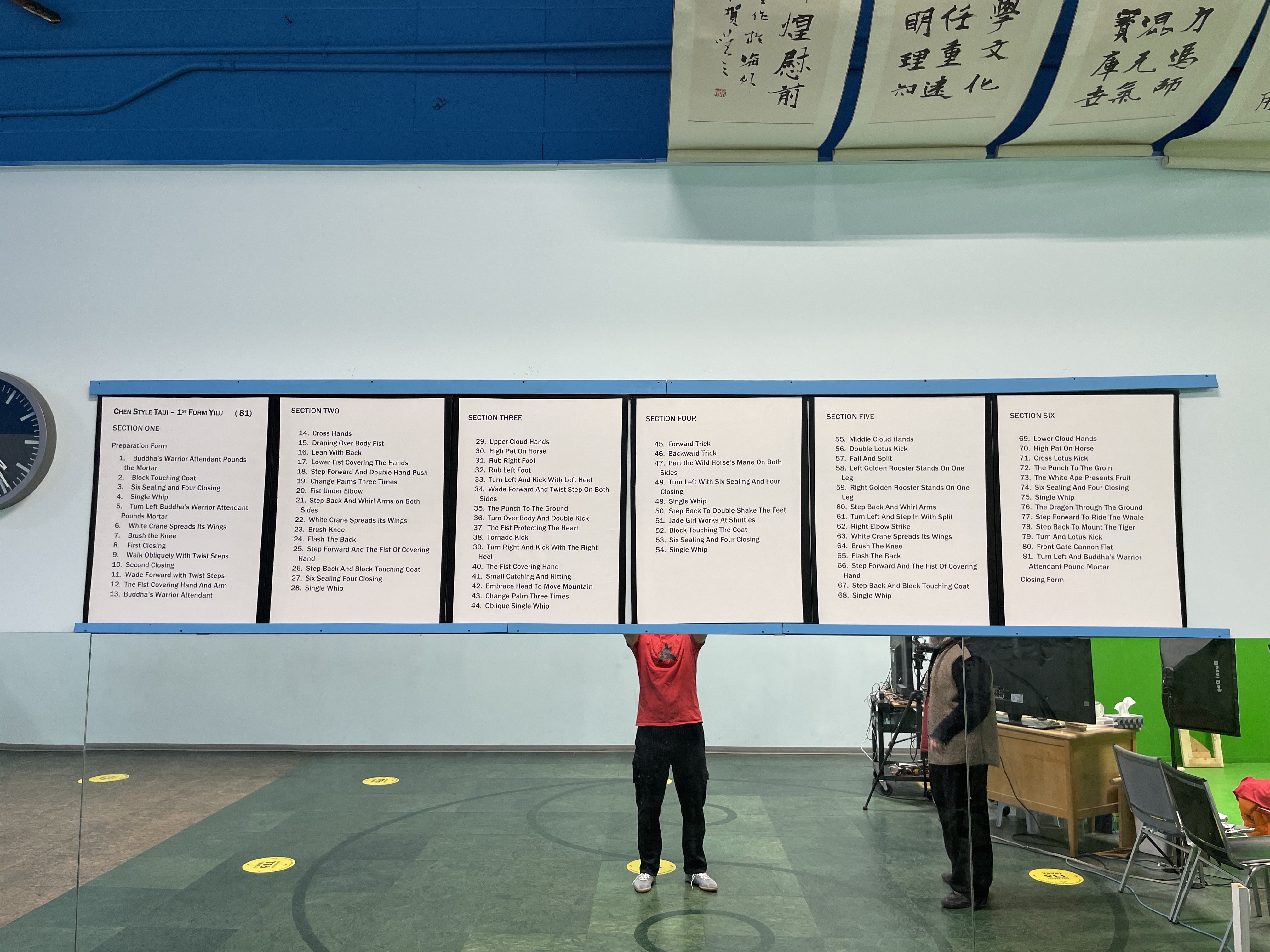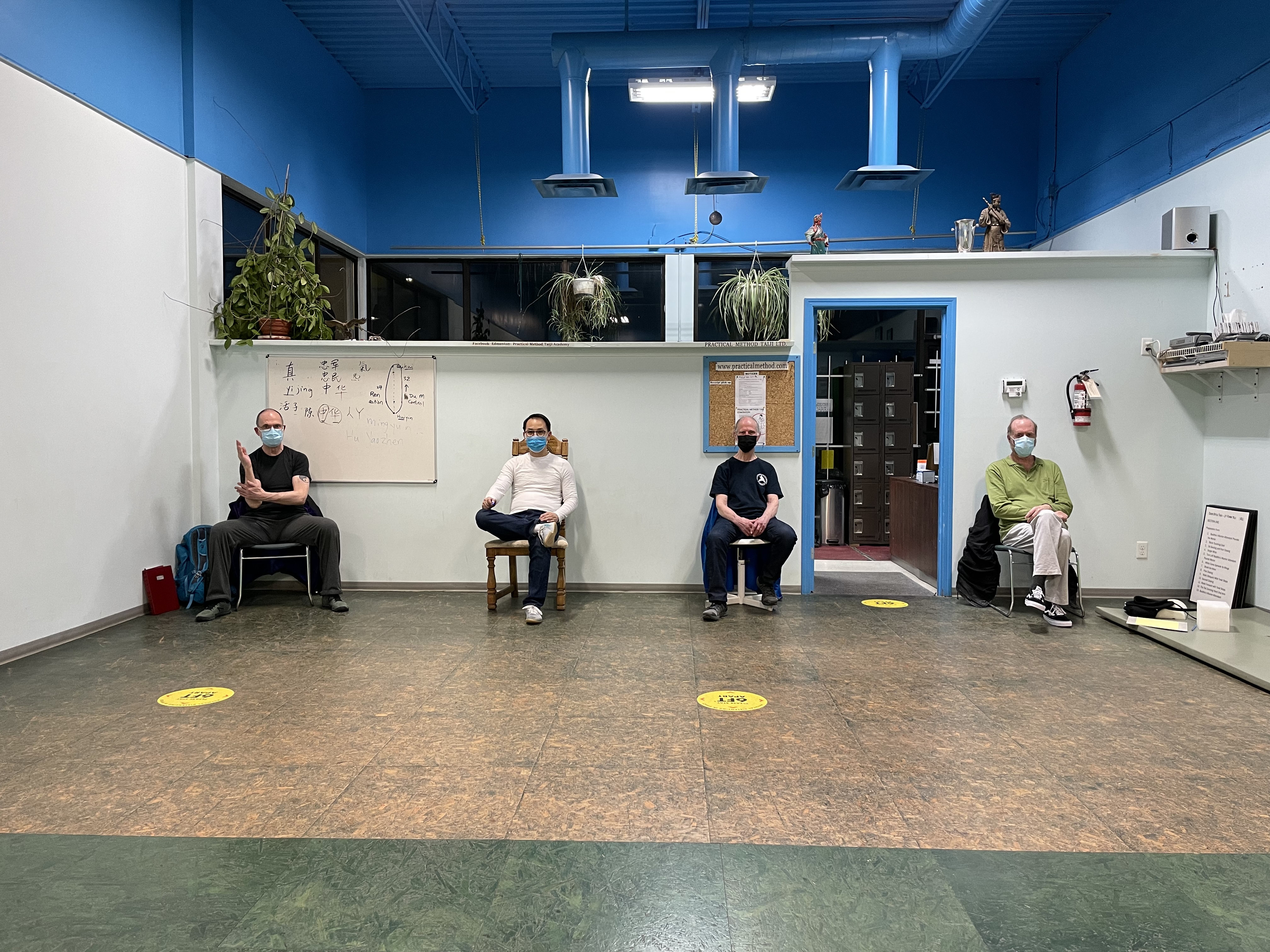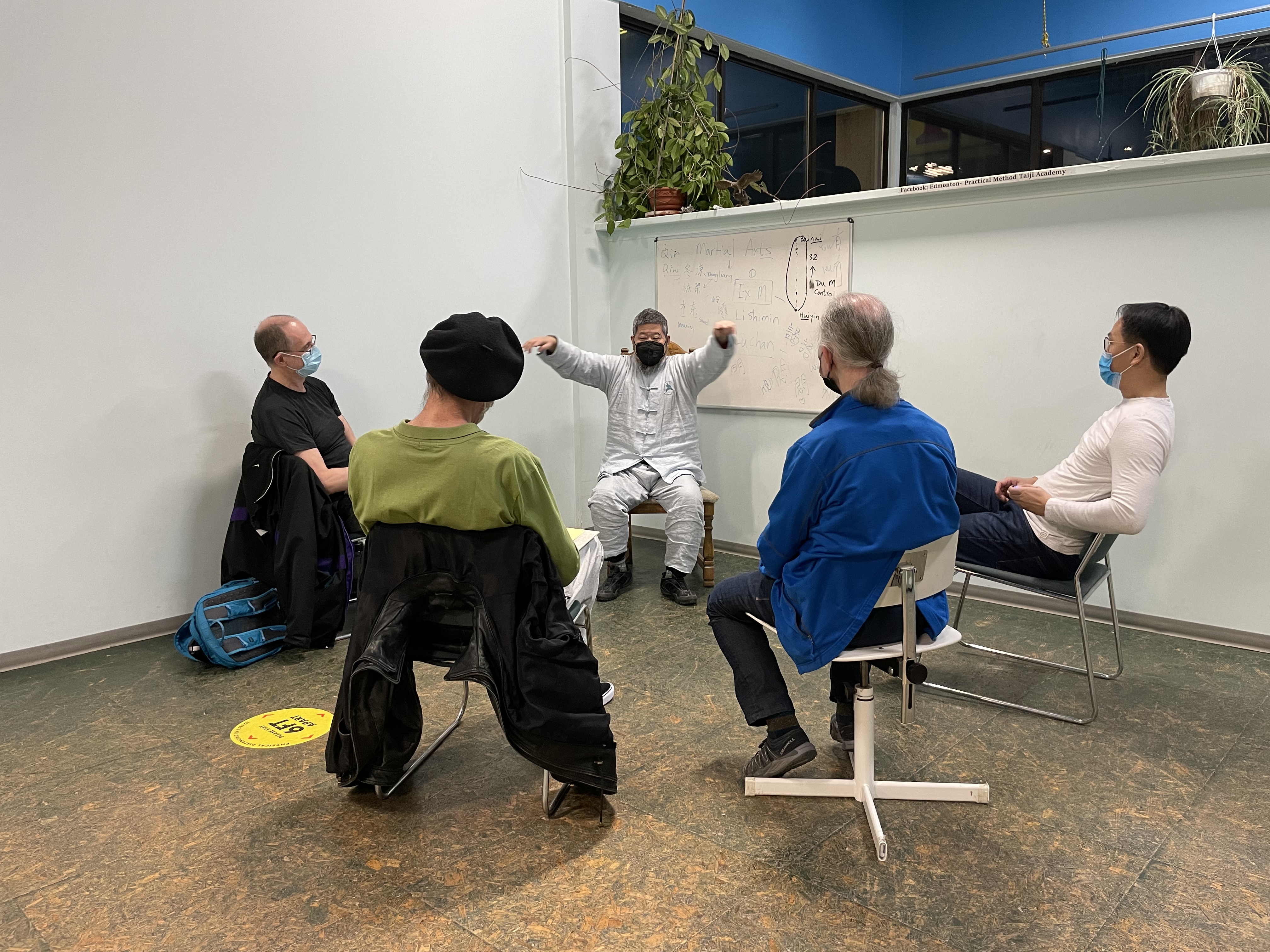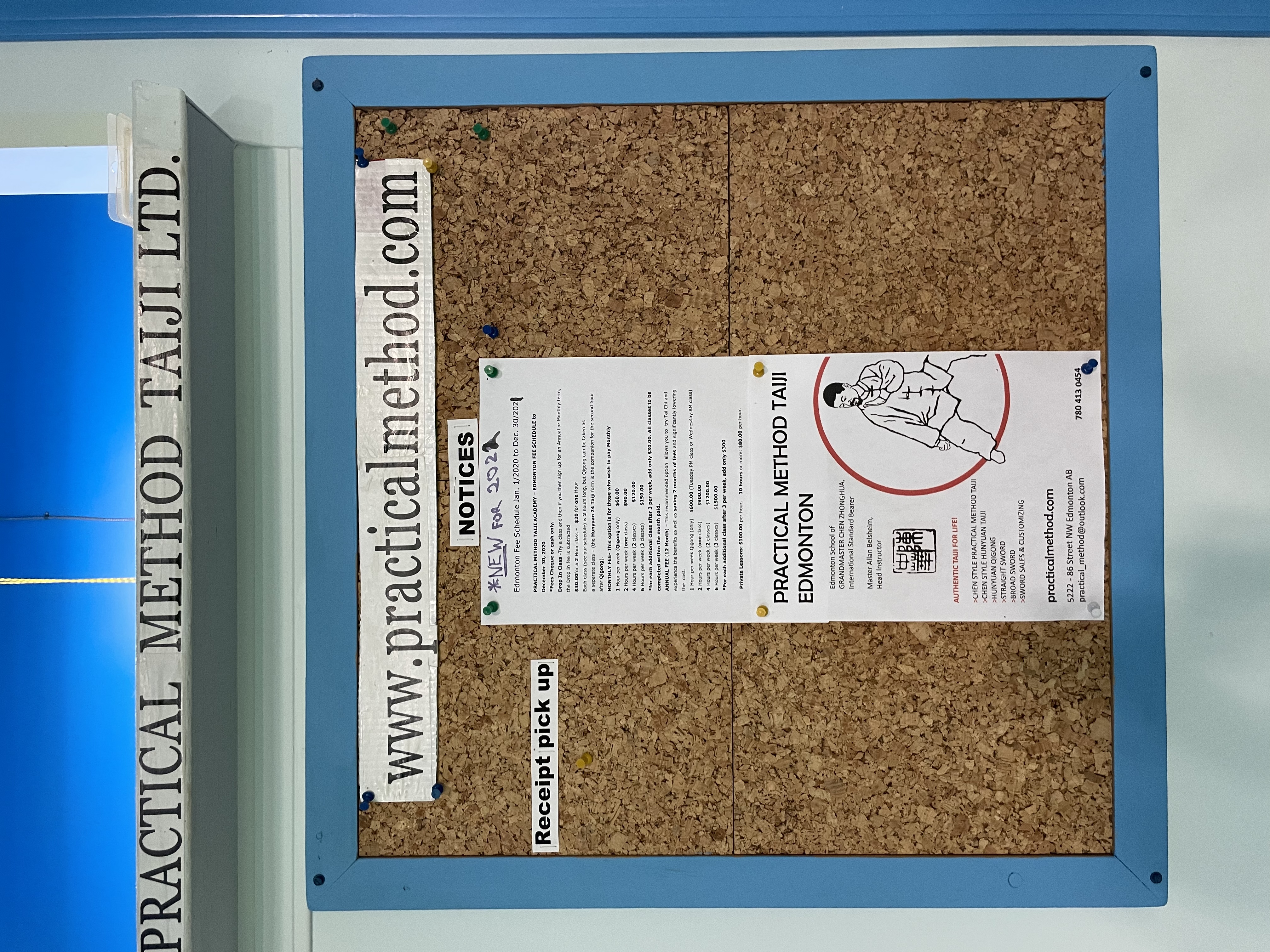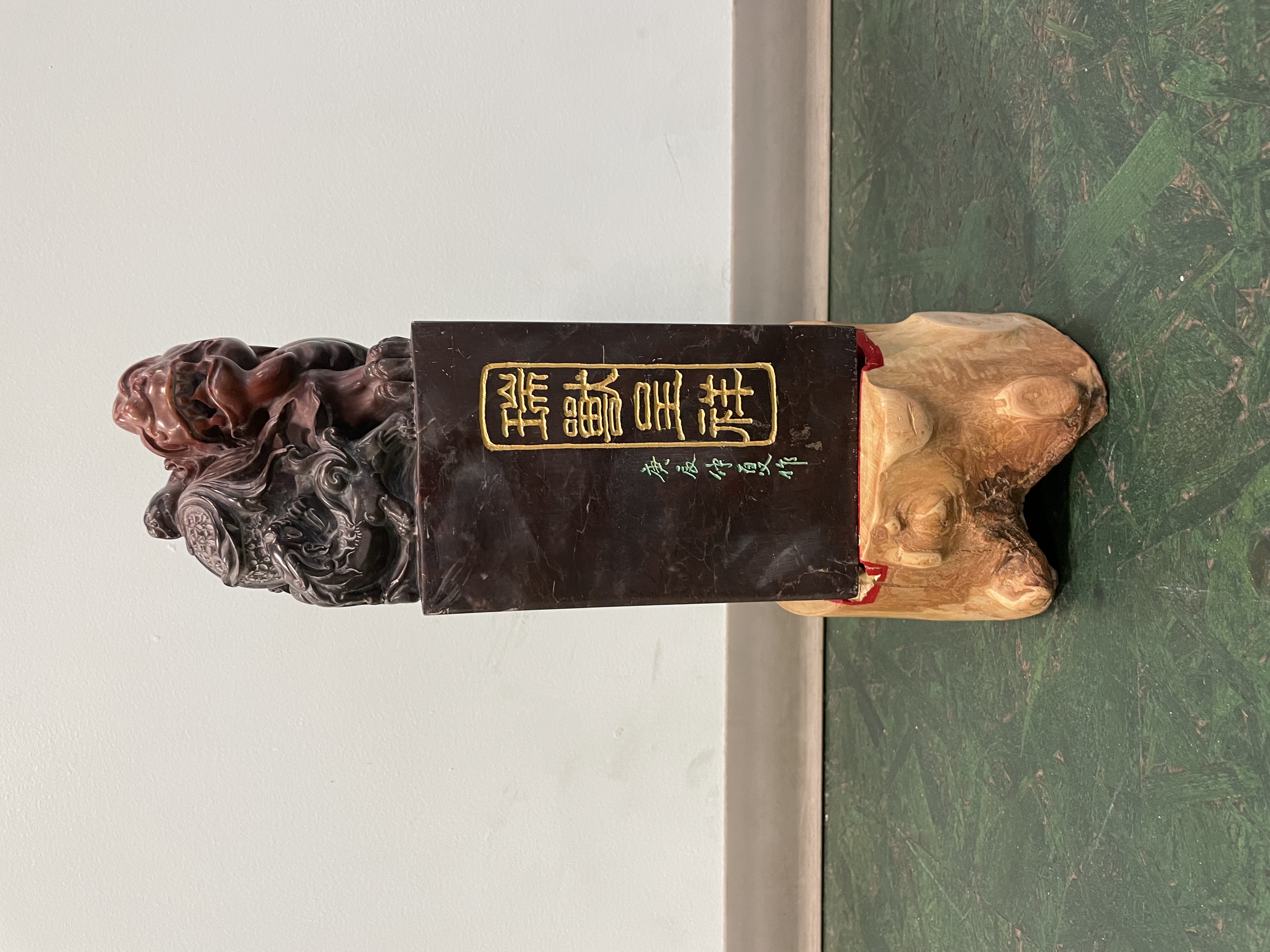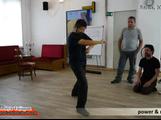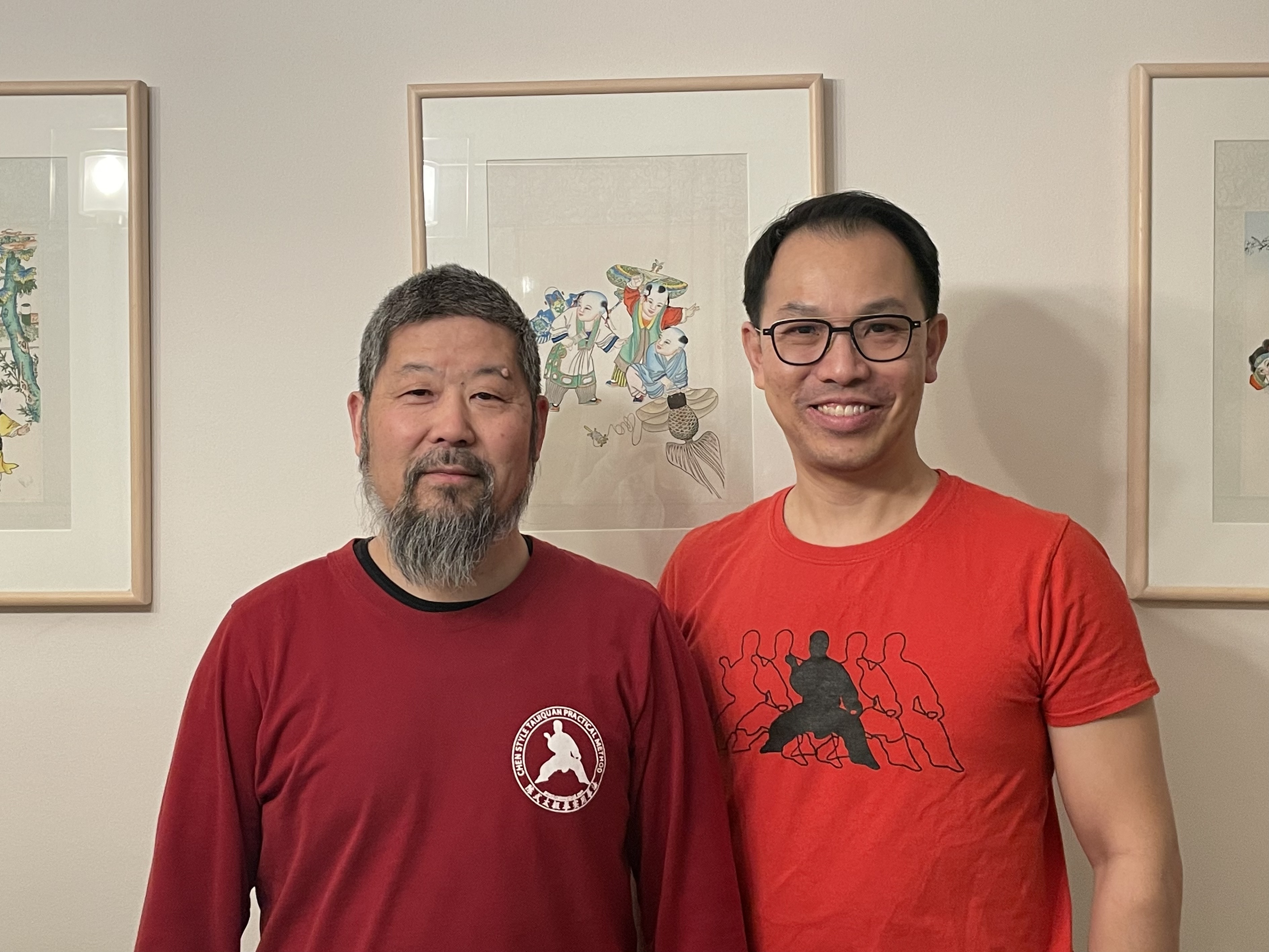

1) Stretch
I need to stretch to lock the shoulder, and stretch the kua against the shoulder after step the front foot forward (the rear foot also needs to follow as well).
2) Bie 别
Bie is how we can lock the other person. Bie is catching an object (e.g. a rod) at two dots in opposite directions. I had several problems. The push into the two dots are not in exact opposite directions, the vectors are off. The dots roll around the rod. The force on the dots are not equal. Ultimately, it’s not about how strong we push into the dots to secure the object, it’s about the precision, however, precision can only come with time. If I only know to use strength for now to do it, that’s what I have to do. It just came to my mind that how I should approach this. I should start with one hand moving in whatever direction, and use the hand to match in the opposite direction.
Once the bie is set up, it must be maintained while the 2nd action happens, whatever the 2nd action may be. One of the options is to increase the distance between my kua and the opponent’s kua.
Another thing is after the bie is set up, we can project a 3rd dot beyond the two contacting dots. If we hold the opponent’s wrist and elbow, we can project the third dot at the opponent’s shoulder. By stretching the shoulder beyond its original position, we can continue with my kua action to affect the oppponent’s kua. Once that is done, I can then stretch my front foot. Note that I need to make a small rotation on the waist to point my front butt cheek to the opponent and then stretch my front foot. This is jie jie guan chuan 节节贯穿. One part is finished, another part carries on.
If I have the bie on the opponent’s arm, I must treat it a stick, and as I rotate the waist, the stick must keep going out. Otherwise, I would shortcut, and effectively destroy the overall effect of the rotation.
3) My hand causes my shoulder to move in the same direction.
My shoulder needs to go backward towards the rear goot.
If my chest faces the directly towards the opponent, then when I stretch the hands, my back must go backwards
We need to go 2/3 to the back, and 1/3 to the front for a given stretch.
4) My elbow needs to go into the hand (captive bolt gun).
5) When I want to create the effect of a hit towards the opponent, I must do so like holding a board squared up with the opponent, and then push from the rear foot, and express it through the board. We need to create a split horizontal, and line up the rear, the contact point (where the split happens), and the opponent’s centre.
6) When there are two dots going away from each other, there must be nothing in between.
7) My front foot stepping must go much deeper into the opponent, like a snow plow, to go under the opponent, while the rear foot follows. Once I get the opponent up, I must repeat with rapid small steps to prevent the opponent from coming back down.
8) Taiji Chan Gun
We can use it to the train the strength of the fingers. When we need to elbow to go into the hand, the fingers actually will experiecne high expressure. Currently, my fingers are too weak, and they are unable to handle the high pressure, so my move is not right because I would avoid that right move.
9) Account for opponent’s force to determine the direction and magnitude of my action.
10) Become solid from dantian to the rear foot, so the top can relax.
Master Chen also gave a cannon fist correction up to move 29 The whip wrapping around the body. There will be a video for it later. I also took some posture photos.
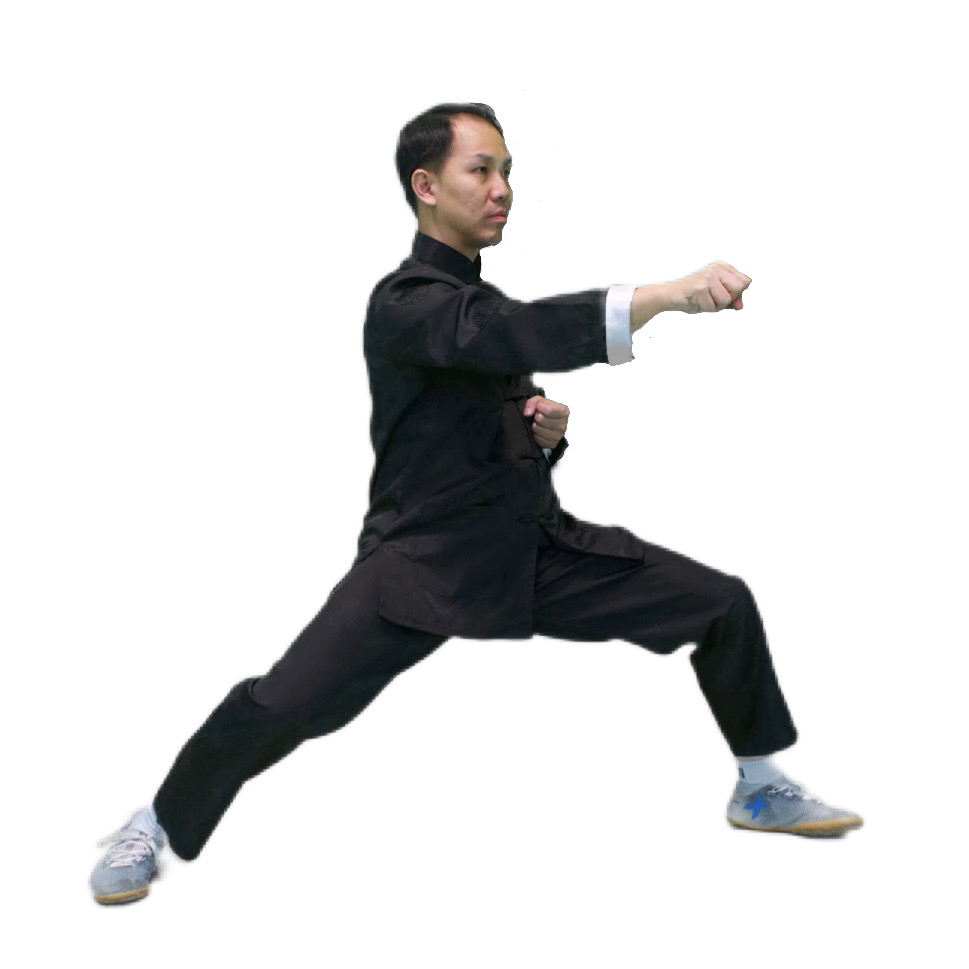
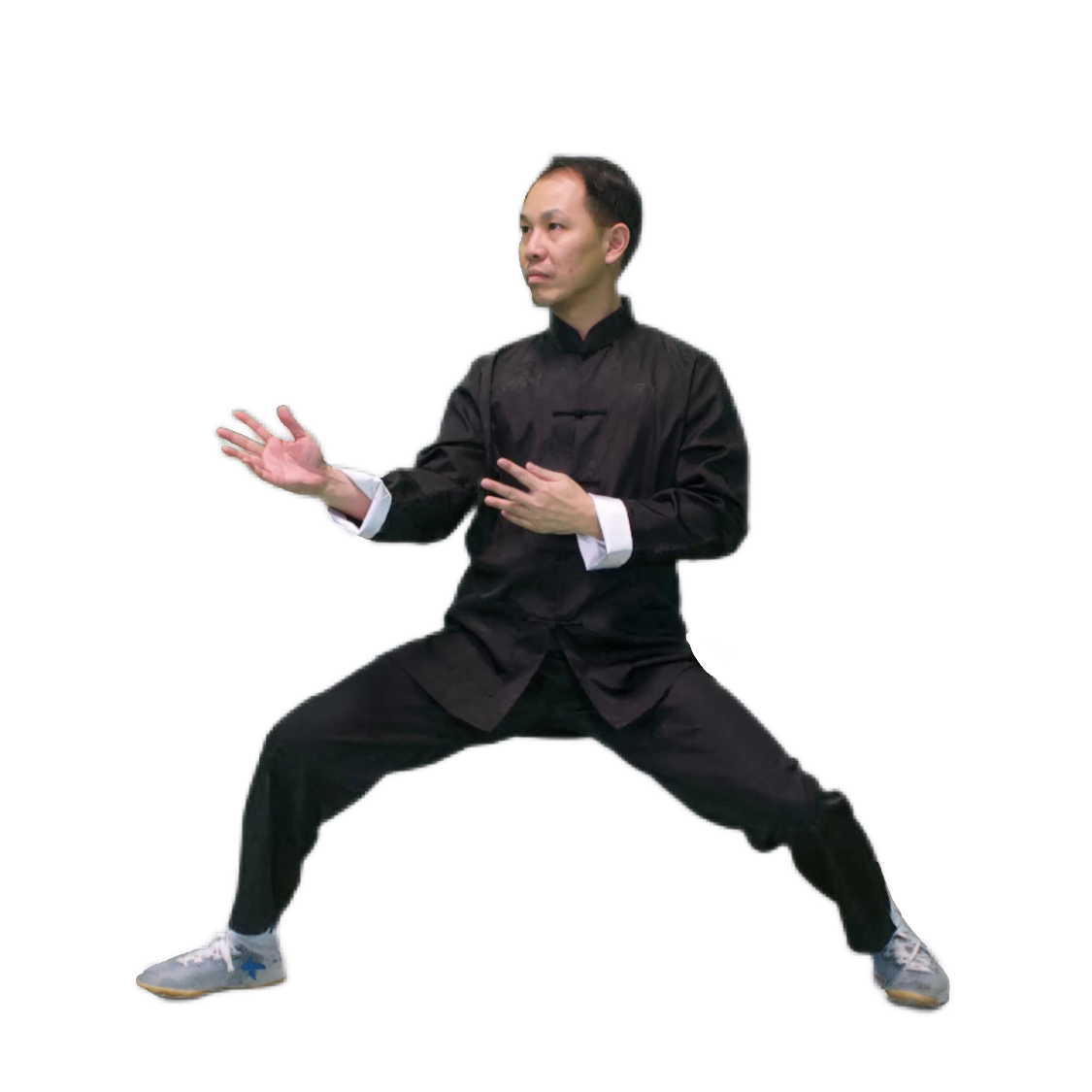

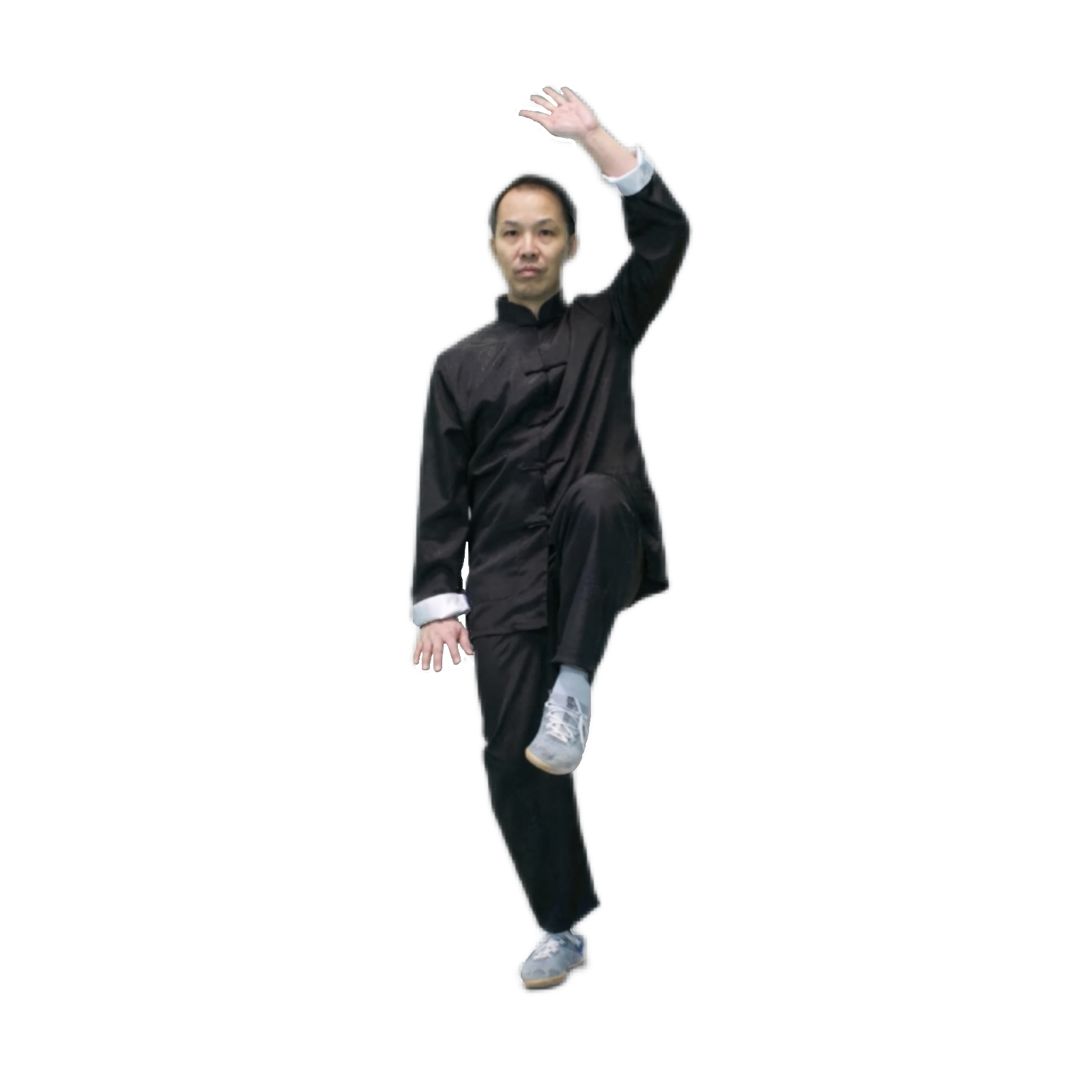
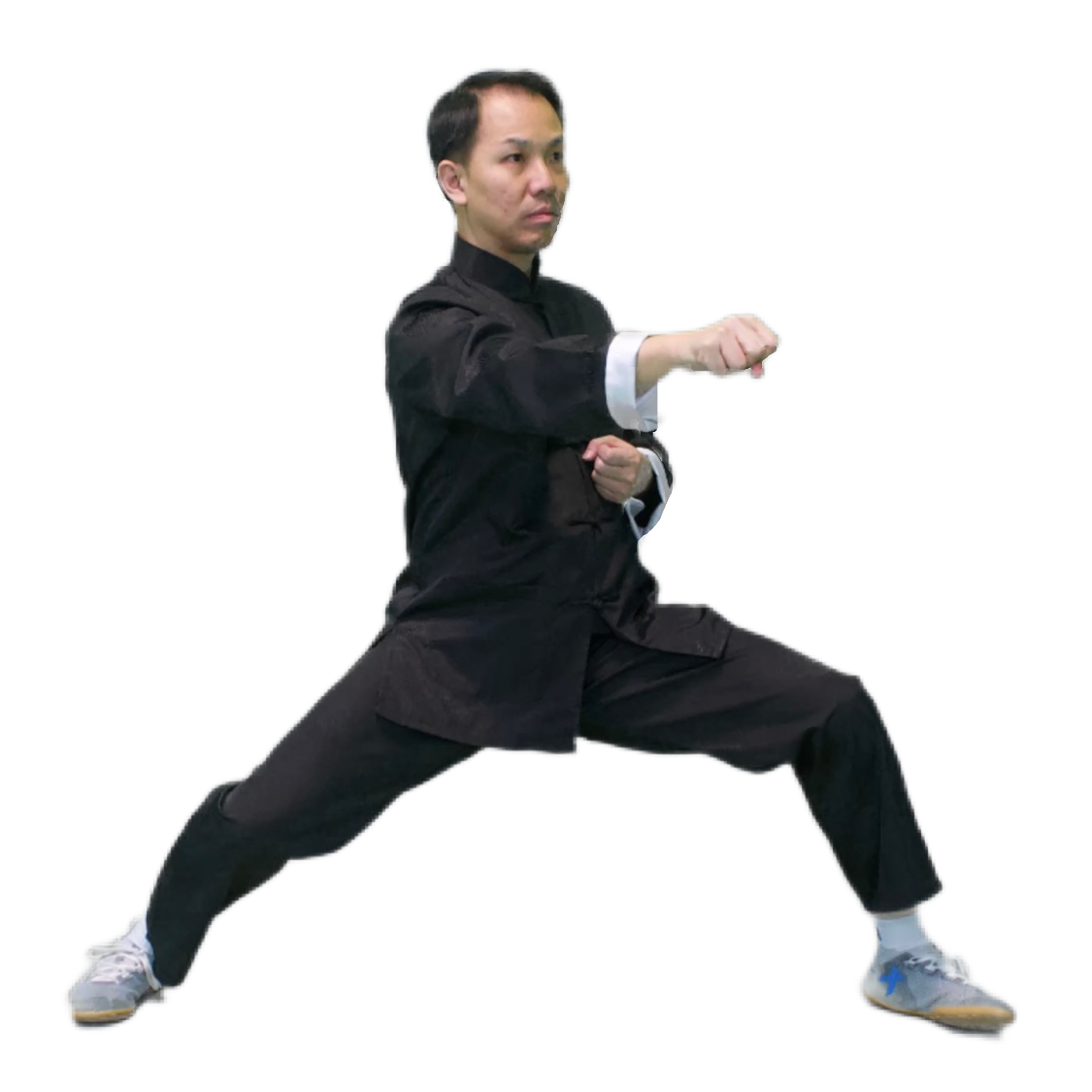
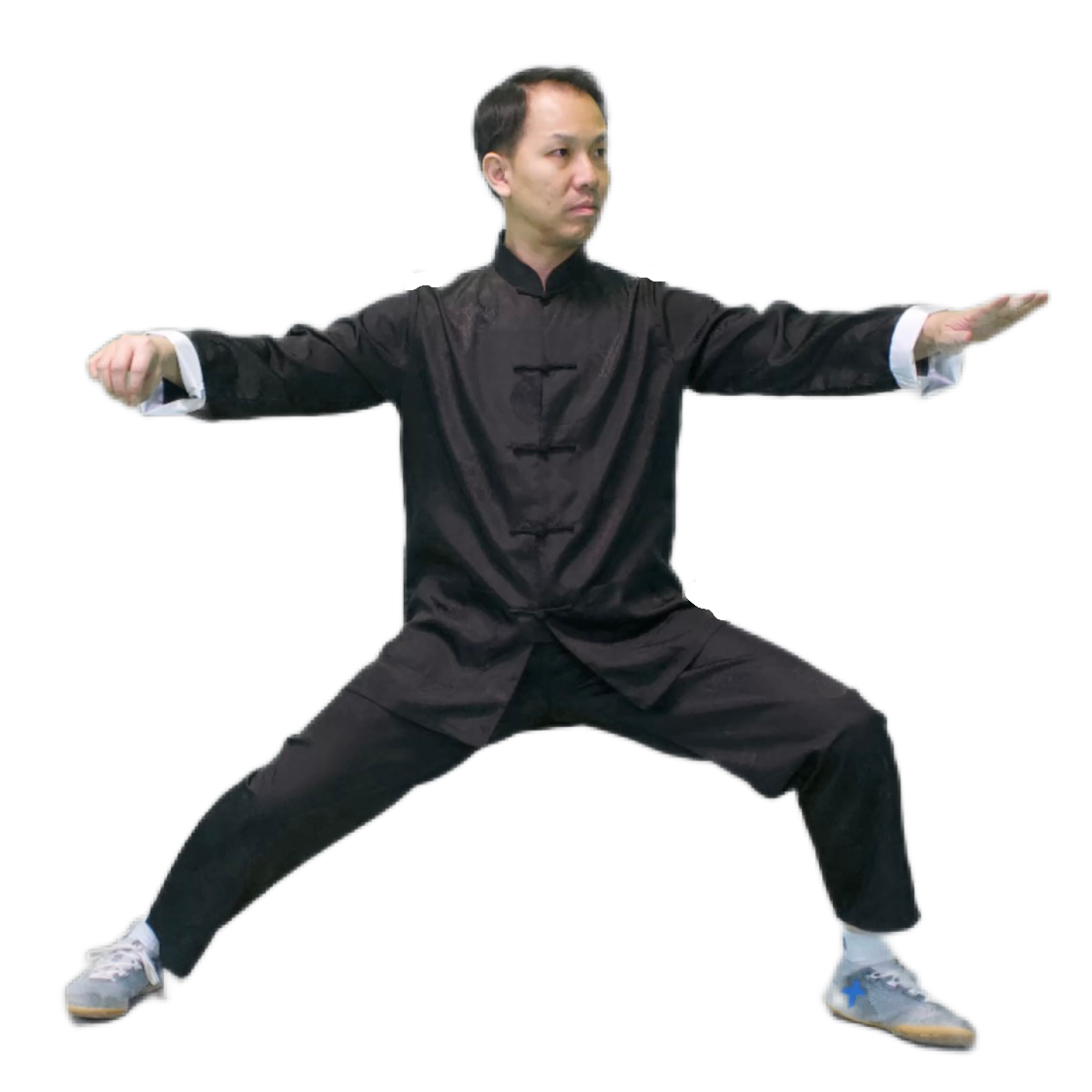
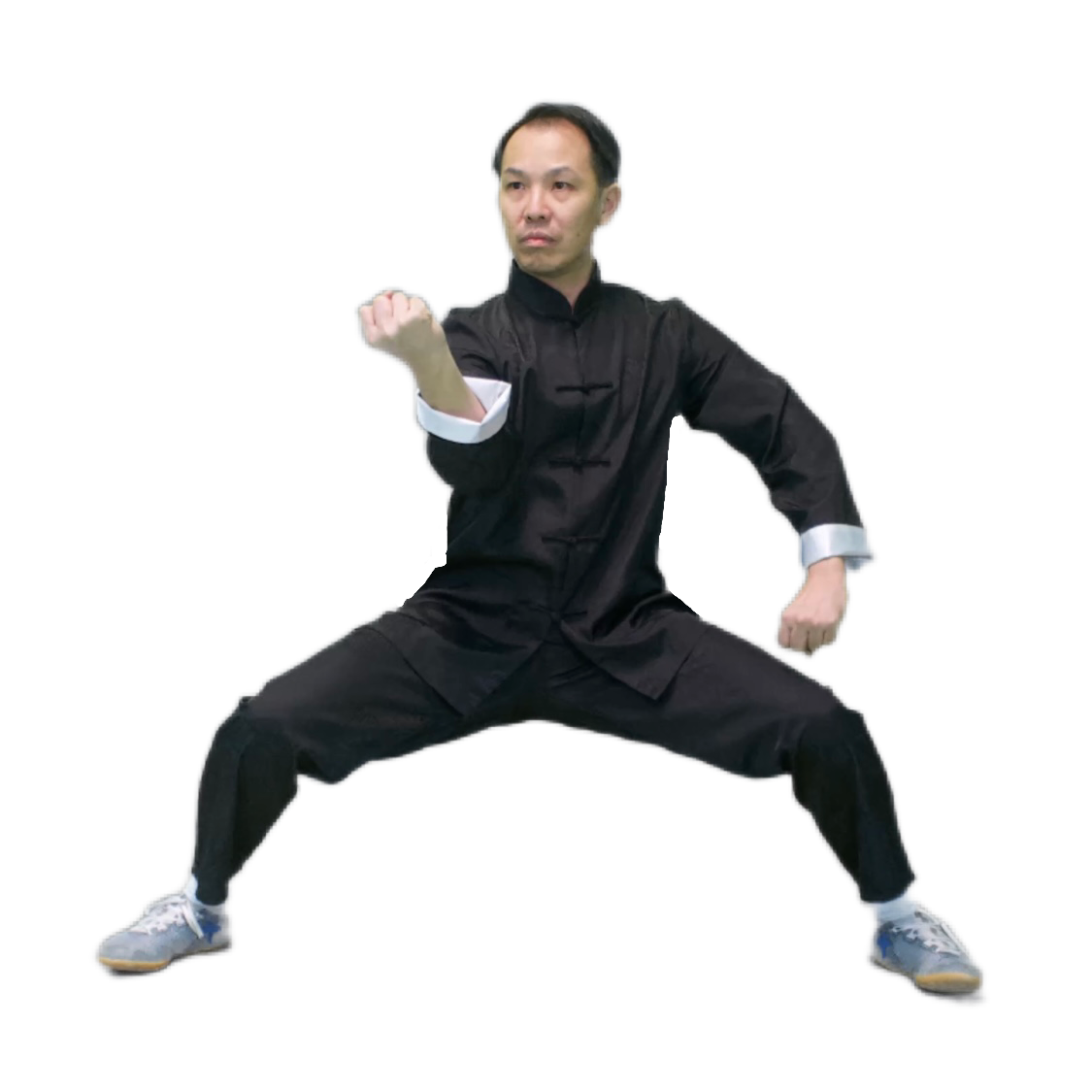
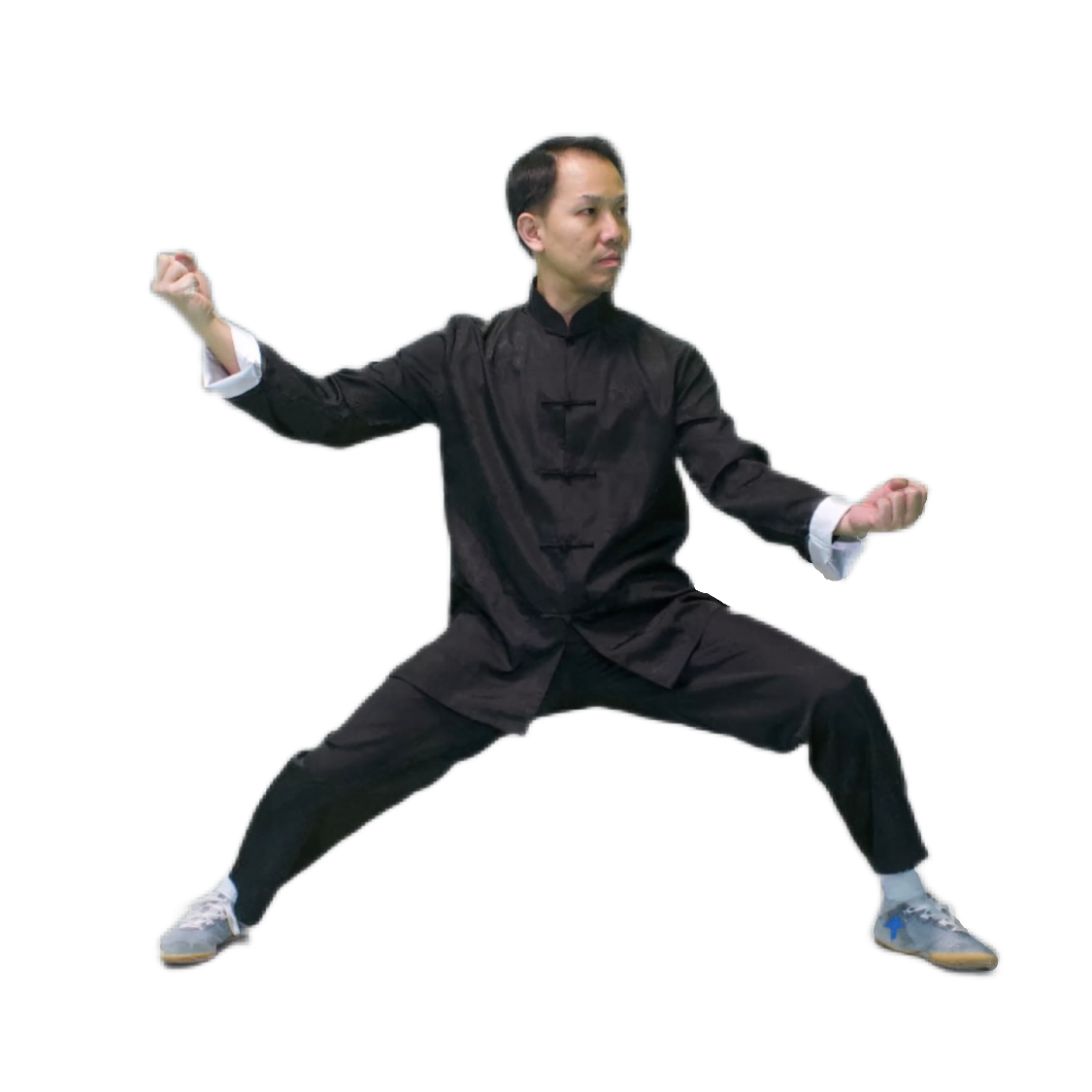
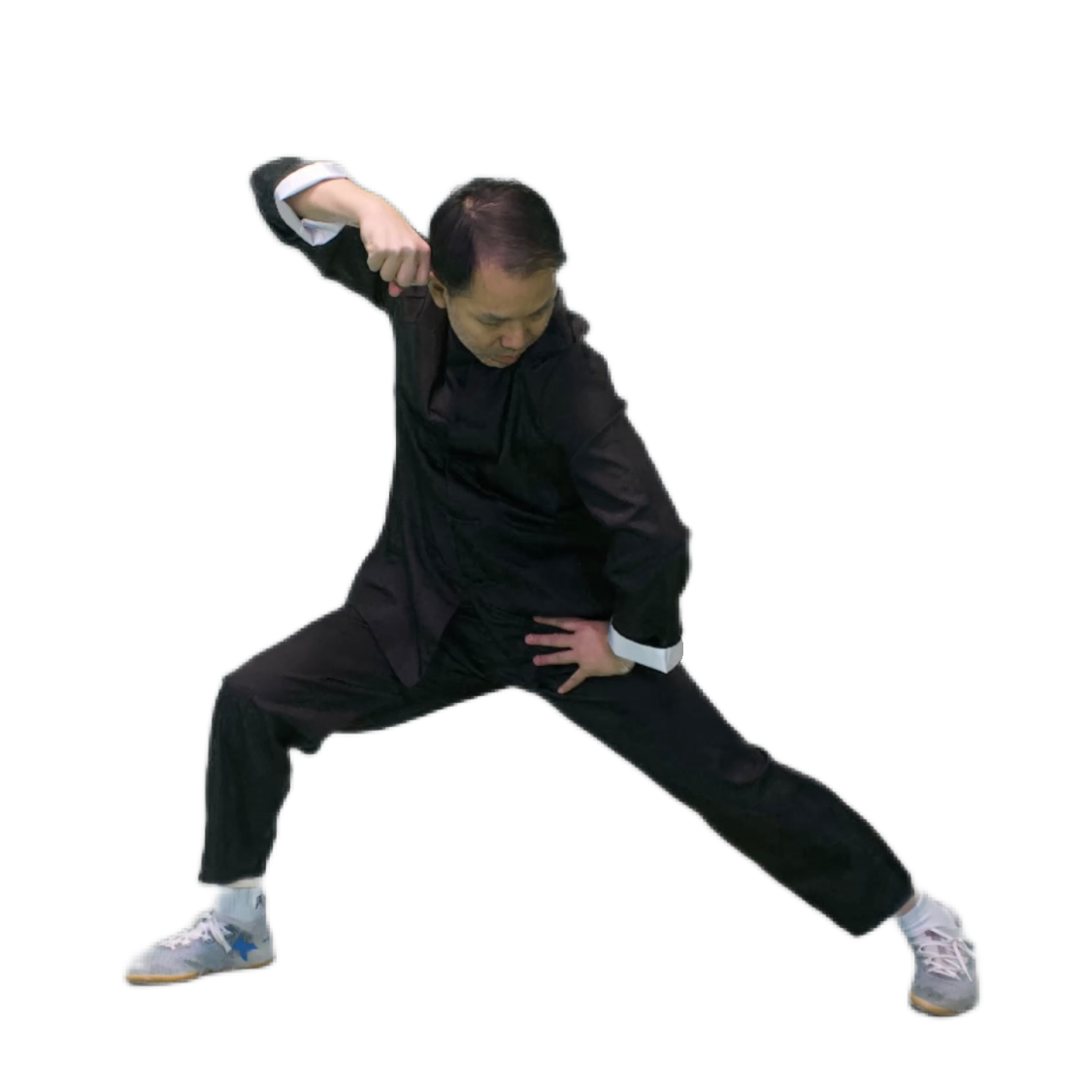
Master Chen gave a history lesson martial arts. Shalin Temple was recognized as the representative of the external martial art. The 2nd emperor of Tang Dynasty Tang Tai Zhong Li Shimin was helped by Shalin Temple before he became the emperor, so he gave the recognition to Shalin Temple. Later, Wu Dang (Daoism) was recognized as the representative of the internal martial art, and claimed their approach was better than the external one. New speculation is that Lao Zi rode the donkey backwards to the west, and then Buddism was created 400 years later in India. Buddism and Daoism shared a lot of common ideas. With the idea of emptyness in Buddism, we should give things away to keep it clean. In Daoism, there is nothing there, and yet everything comes from it.
Thanks to Allan Belsheim for leading the Hunyuan Qigong 12 form.
